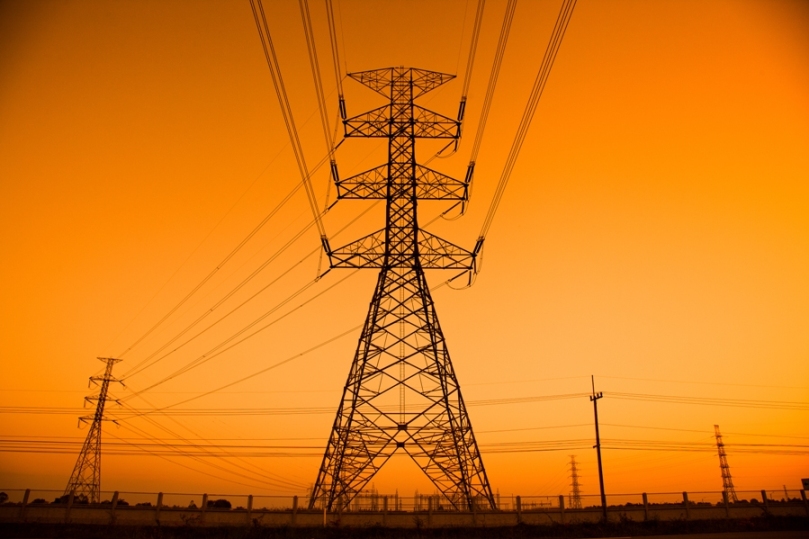
CLP India is among the oldest and largest foreign investors in India’s power sector. CLP India today has a power generation portfolio of over 3 GW spread over supercritical coal, gas, and predominantly, renewable energy projects. CLP India has now diversified into power transmission, initially through the brownfied route. We have Naveen Munjal, Director – Business Development & Commercial (Conventional), CLP India, discussing his company’s growth plans in the power transmission segment – an area that Munjal believes has immense potential. An interview by Venugopal Pillai.
We recall that in 2019, CLP India entered into a deal to acquire three transmission assets (Satpura, Alipurduar and Kohima-Mariani) from Kalpataru Power Transmission Ltd. What is the current overall status?
Of the aforesaid three projects, CLP India successfully completed the acquisition of Satpura Transco Pvt Ltd from Kalptaru Power Transmission Ltd in November 2019. Since the takeover, the asset has been managed in adherence to the highest standards, with close to 100 per cent availability.
The transaction for Alipurduar Transmission Ltd (ATL) deal was terminated as certain conditions precedent under the SPA could not be met within the stipulated time. The third project, viz. Kohima-Mariani Transmission Ltd, achieved COD in December 2020, and we are working with the sellers for completing the CPs to close the transaction.
We will continue to explore growth in the transmission sector on a selective basis through the brownfield and greenfield routes and contribute in strengthening India’s transmission infrastructure.
“With the resolution of many logistical and regulatory issues in the sector, we have identified it as a strong focus area for our business.”
Since its inception, CLP India has focused on power generation – both conventional and renewables. What was the rationale behind entering the power transmission developer business?
With support from our shareholders, the CLP Group and CDPQ, we have remained focused on businesses with firm, long-term offtake contracts with credible counterparties. While our business so far has centered around power generation, we are keen on expanding in the transmission space and have, in fact, participated in a few greenfield bids/acquisition opportunities over the years.
With the resolution of many logistical and regulatory issues in the sector, we expect a great outlook for the power transmission segment in India and have identified it as a strong focus area for our business. We will benefit from the experience of the CLP Group and CDPQ in transmission investments and operations. There are other obvious reasons for our interest in the sector – the large investment potential, stable cash flows, better payment security mechanism, and, most importantly, the fact that it is a zero-carbon business that will help us in diversifying our portfolio.
Apart from the aforementioned acquisitions, has CLP India been bidding for transmission projects under the tariff-based competitive bidding (TBCB) route?
CLP India has indeed participated in some select transmission bids, based on our internal selection criteria since 2006-07, when the first project was awarded through competitive bidding, viz. Western Region Strengthening Scheme (WRSS).
We note there has been a phase of consolidation in the power transmission (IPTC) sector with players like Kalpataru, GMR Energy, Essel Infraprojects, KEC International, etc. divesting their stake in their transmission assets. What is your take on the matter?
Consolidation is being witnessed in many sectors including power. We have seen it happen before, in both the conventional and the renewable energy generation space. We have seen it in transmission too. While a few players have remained in the market, some others have exited for varying reasons such as churning of portfolio, focusing on areas of strength or financial distress. Furthermore, with global capital looking at the transmission sector favorably, some players have divested their equity at attractive valuations.
“We have seen intermittent movements in the intrastate power transmission sector, in recent times.”
Also read: TBCB Report Card For CY2020: Zero Additions, Four Completions
Once all the proposed acquisitions from Kalpataru take place, CLP India will also be present in the intrastate power transmission market. How do you rate opportunities in this space, given that some states are deploying the TBCB route for development of intrastate lines?
 Considering the Government of India’s ambitious target of 450 GW renewable generation capacity by 2030, an estimated investment to the tune of Rs.5 lakh crore (Rs.5 trillion) will be required in the transmission sector over the next 8-10 years to address the growth of renewable energy (RE) generation.
Considering the Government of India’s ambitious target of 450 GW renewable generation capacity by 2030, an estimated investment to the tune of Rs.5 lakh crore (Rs.5 trillion) will be required in the transmission sector over the next 8-10 years to address the growth of renewable energy (RE) generation.
While large capacity addition is already in the pipeline in the interstate sector, the intrastate sector is lagging in a big way. We have seen intermittent movements in the intrastate sector; Madhya Pradesh and Rajasthan have recently awarded a few projects through the TBCB route. However, states must step up their efforts to promote private investments for execution of vital links and strengthen/build the networks at the requisite pace. Also, some work will be required to strengthen the regulatory framework and payment security mechanism to make the intrastate sector more investment-friendly.
Given the size of the expected opportunities in the intrastate sector, we will certainly be keen to look at upcoming projects on a selective basis. In fact, STPL (Satpura), our first transmission asset, is an intrastate asset and our experience with the state sector project so far has been good.
“InvITs represent a major development in India’s power transmission market.”
Do you see any slowdown in the TBCB bidding process for interregional and interstate lines given that no new lines were awarded in 2020, and only five in 2021 so far?
It is true that the pace of awarding of projects has slowed down during 2020 and 2021. This is mainly due to the following reasons:
- The lockdowns and travel restrictions since April 2020 have made it difficult for bidders to assess the risks associated with projects. In many cases, bidders themselves requested for an extension on the bid deadlines.
- Most of the recently notified transmission schemes were linked with the LTA applications of renewable energy projects. Delays in the commencement of the bid process for the underlying renewable energy projects have, in turn, resulted in delay in the tenders of transmission projects.
With the recent easing of Covid-19 restrictions, we expect that new projects will be notified and awarded in FY22.
The emergence of Infrastructure Investment Trusts (InvIT by IndiGrid and PGCIL, so far) represents a major development in the Indian power transmission industry Do you see this as the maturing of the Indian power transmission sector?
Yes, it is a major development in India’s power transmission market, and the success of these InviTs reflects the strong belief in the sector.
It has not only provided a good platform for investors and fund houses to invest in the sector without taking direct exposure to execution/construction risks, but has also helped experienced developers to unlock their capital with decent premiums for investments in new projects.
In line with our shareholders’ focus on low-carbon investments, CLP India will continue to expand its generation portfolio primarily through clean energy sources.
Please share your general growth plans in the power transmission space and discuss how this would complement your significant power generation portfolio of over 3 GW. Also, can we presume that CLP India would be pursuing only clean energy power generation projects hereon?
As we mentioned before, the transmission business is an area of strong focus for CLP India, and we will continue to explore investment opportunities in the sector on a selective basis. The transmission business complements CLP India’s generation portfolio through diversification of the business portfolio and through visibility of the business across the value chain. As most of the upcoming transmission schemes are linked to renewable energy generation, it also helps us assess the risks associated with upcoming renewable energy projects.
In line with our shareholders’ focus on low-carbon investments, CLP India will continue to expand its generation portfolio primarily through clean energy sources.


